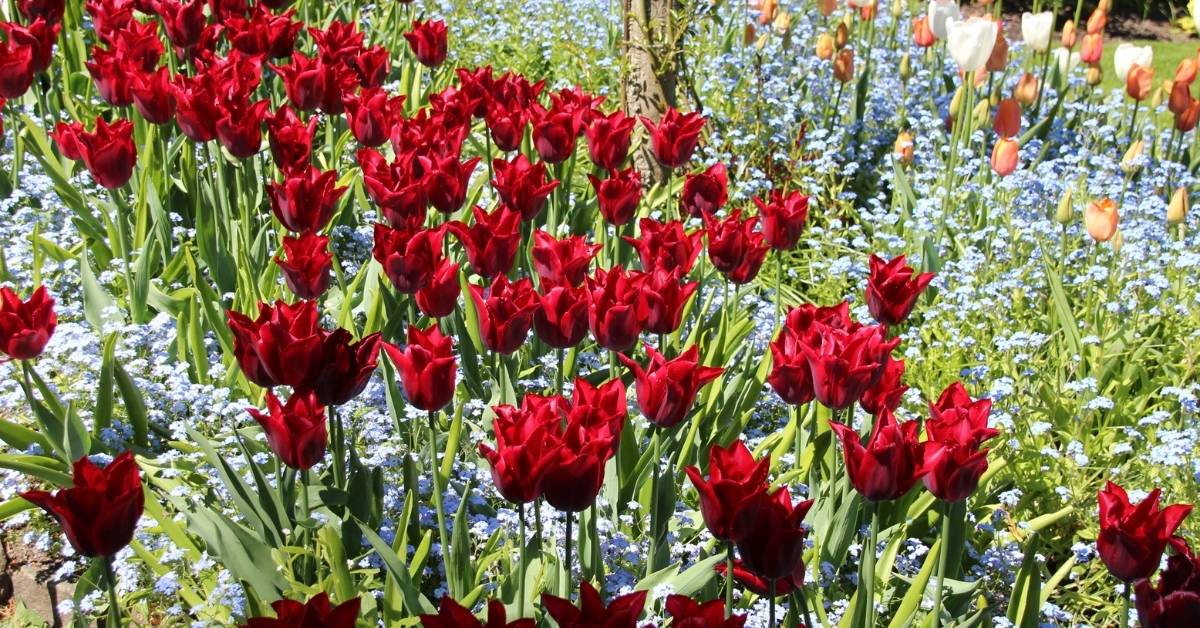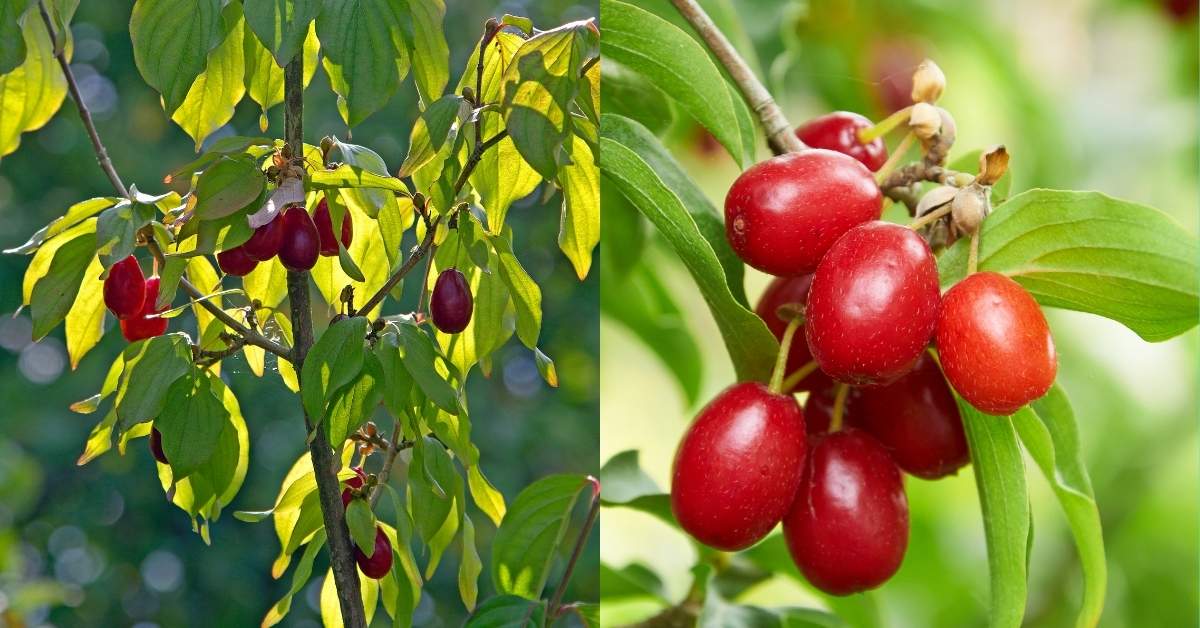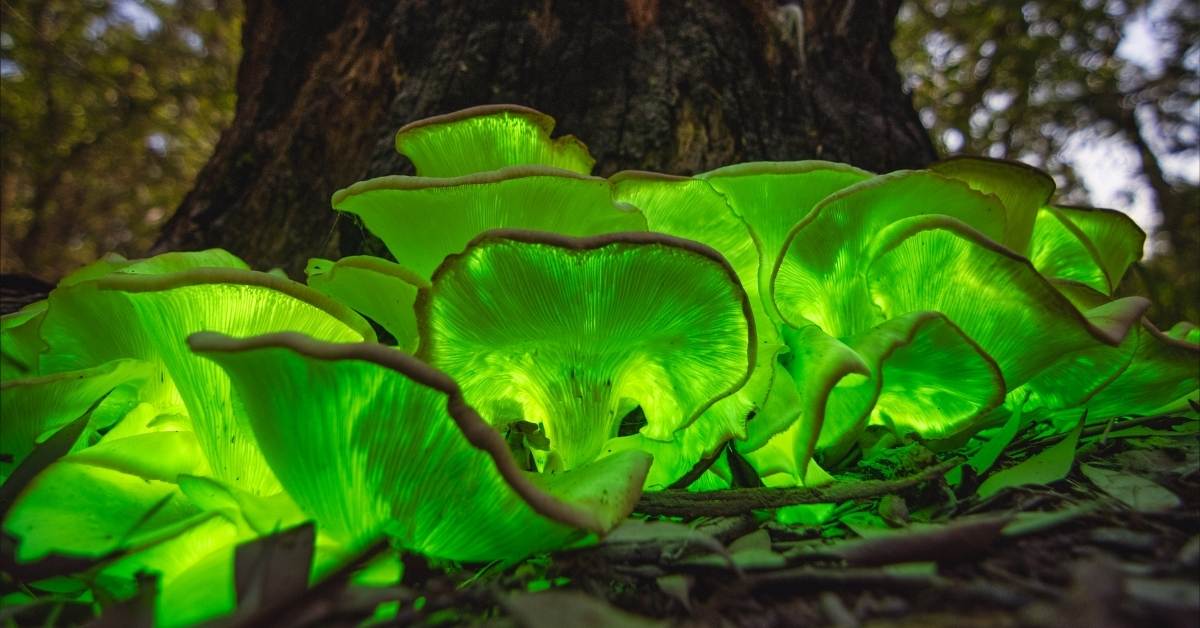Everyone loves bright, colorful tulips. Every spring, they fascinate us with their gracefulness and diversity. But for the spring riot of colors to take place, you should take care of planting Tulips in fall.
When to plant Tulip bulbs? – Catch up to frost
The tulip is an amazing flower. It is not afraid of winter at all. Most of his active life falls on the cold season. In autumn, from the moment of planting, it begins to grow roots vigorously. Then a sprout extends from the bulb and reaches the soil surface. In this state, the plant hibernates.
In the spring, the tulip amazes everyone with its beauty, and in the summer, when most of the flowers enjoy the sun, it hides in the ground. But this peace is only apparent: a new flower is forming in the mother’s bulb at this time.
It is imperative to determine when to plant the bulbs. The weather usually dictates them. Tulips should be planted so that they have time to take root before the onset of stable frosts. The optimum soil temperature for the excellent rooting of tulip bulbs is 42-50°F (6-10 ° C).
Under these conditions, they usually grow roots in 3-4 weeks. At lower or higher temperatures, the root formation is less active.
Early flowering tulips are planted one to two weeks earlier than late flowering ones.
Advice. If you see undried tulip bulbs on sale in October, November, and even December, take it! You can plant them at any time while the soil lends itself to a shovel. Due to the late planting dates, flowering may not be so plentiful, but new varieties will appear.
When to plant tulips in the fall
So, You may believe that your bulb-planting days are over after the first frost or snowfall. However, you can plant bulbs as long as the soil is workable. This implies you can plant bulbs as late as January if you have a deep enough hole to place them in. Tulips and daffodils can be planted as late as late January!
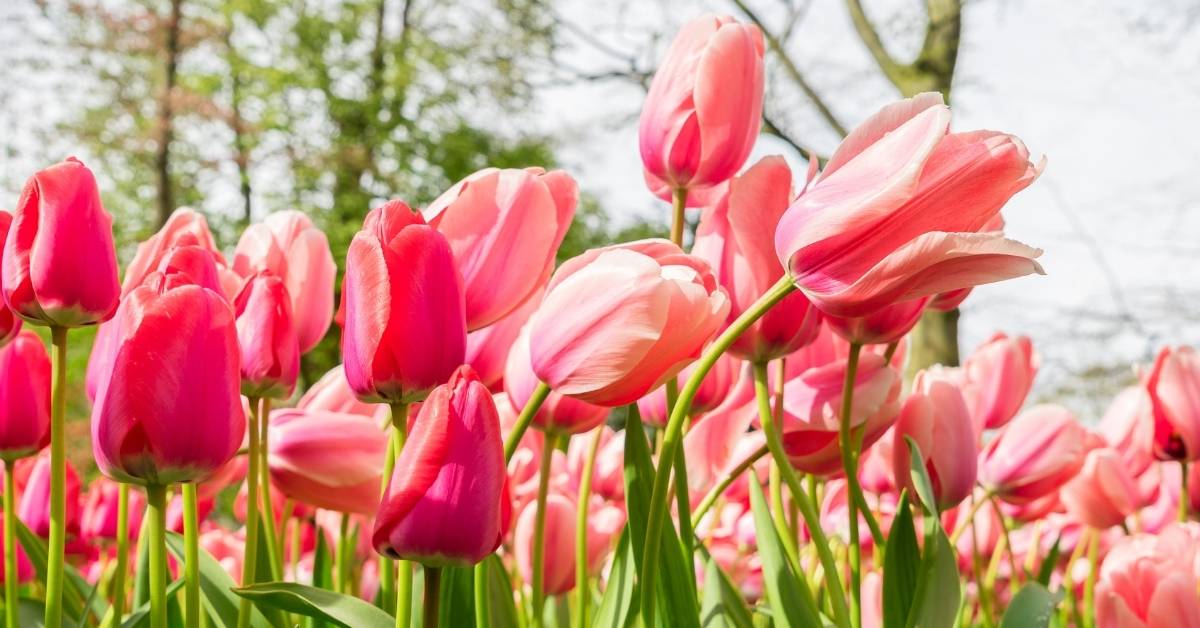
Planting the bulbs in the fall
First, you need to choose a suitable place: level, with permeable soil, well lit and protected from strong cold winds. After all, if the sun is not enough, the color will not be so bright, and the stems will be elongated.
All this will have a harmful effect on the appearance of tulips. Bulbs in the shade will not be able to store enough nutrients. The winds walking around the flower garden will shorten the flowering period and break the plants.
Soils with an acidic reaction are not suitable for tulips; they grow well only on neutral or slightly alkaline. To neutralize acidity, dolomite flour, hydrated lime, chalk, or wood ash should be added before planting.
The splendor of flowering tulips largely depends on how the soil will be filled. A month before planting, mineral fertilizers are applied at the rate of 2.11oz/60 g / m2 of double superphosphate and 60 g / m2 of potassium magnesium.
Nitrogen fertilizers should be added directly when planting bulbs (10 g / m2 ammonium nitrate) or in the spring in top dressing. At the same time, well-decomposed compost is also given (a bucket per 1 sq. M).
In no case should fresh manure be introduced: this can lead to rotting of the bulbs. Sand is poured under the bottom of each with a layer of 1.2 inches (3 cm); they also need to fill the bulb with the head so that there are fewer fungal diseases.
Inspect the bulbs before planting. Their skin should be clean, without stains, and they themselves should be firm and heavy. Reject the sick.
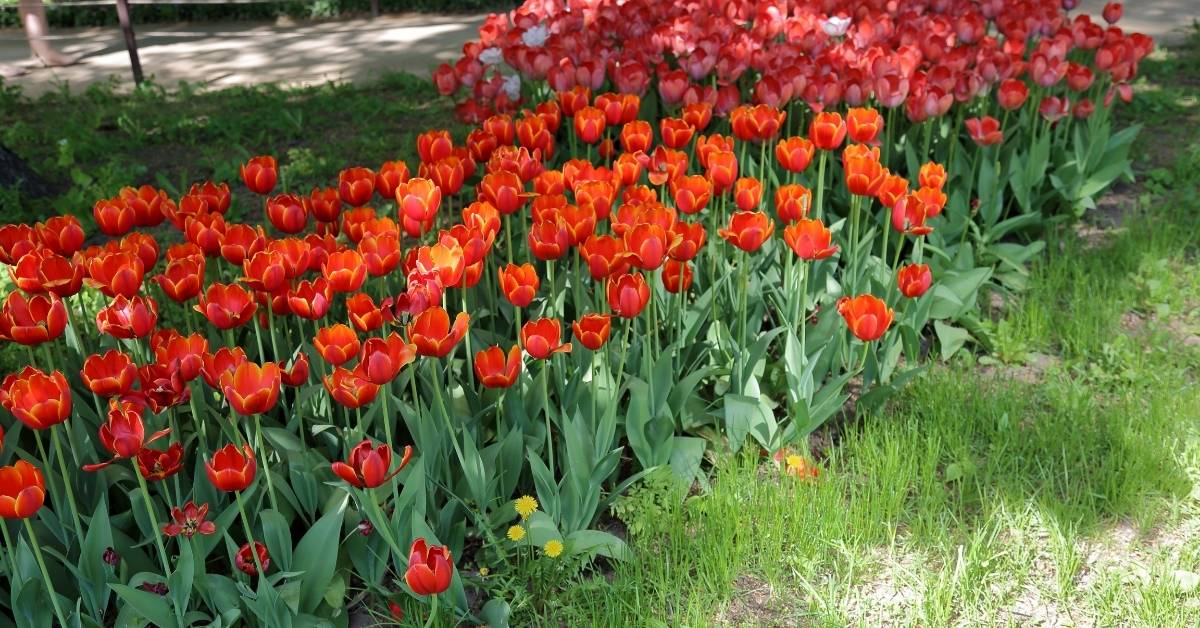
And healthy ones to prevent diseases must be kept in a solution of potassium permanganate (0.15%, soaking for 2 hours). Either use Maxim fungicides (4 ml per 0.5 US gallons (2 liters) of water, soaking for 30 minutes) or Augustine No. 5 (2 ml per 1 liter of water, soak for 2 hours).
Planting depth and distance in a row directly depends on the size of the available planting material: the larger the bulb, the more feeding area it needs. Usually, the planting depth is determined as three heights of the bulb on light soils (for large soils, it is 4.7-6 inches (12-15 cm)) and two on heavy soils, and the density is 2 diameters.
But in general, the spacing between the bulbs, or their number per square meter, largely depends on what effect you want to achieve. Plant the bulbs at different distances from each other to create a natural, “relaxed” picture, and at the same distance to create a monolithic flower field.
Large bulbs are planted in pre-prepared furrows one by one, small ones – randomly. Special hand planters greatly facilitate the work. Plantings are watered and mulched with humus or peat.
Advice. When planting, the bulbs should not be pressed into the soil too much, damaging the bottom and root buds. The bulbs are placed on the bottom of a furrow or hole and covered with earth so that depression does not form at the planting site in the spring and water does not stagnate.
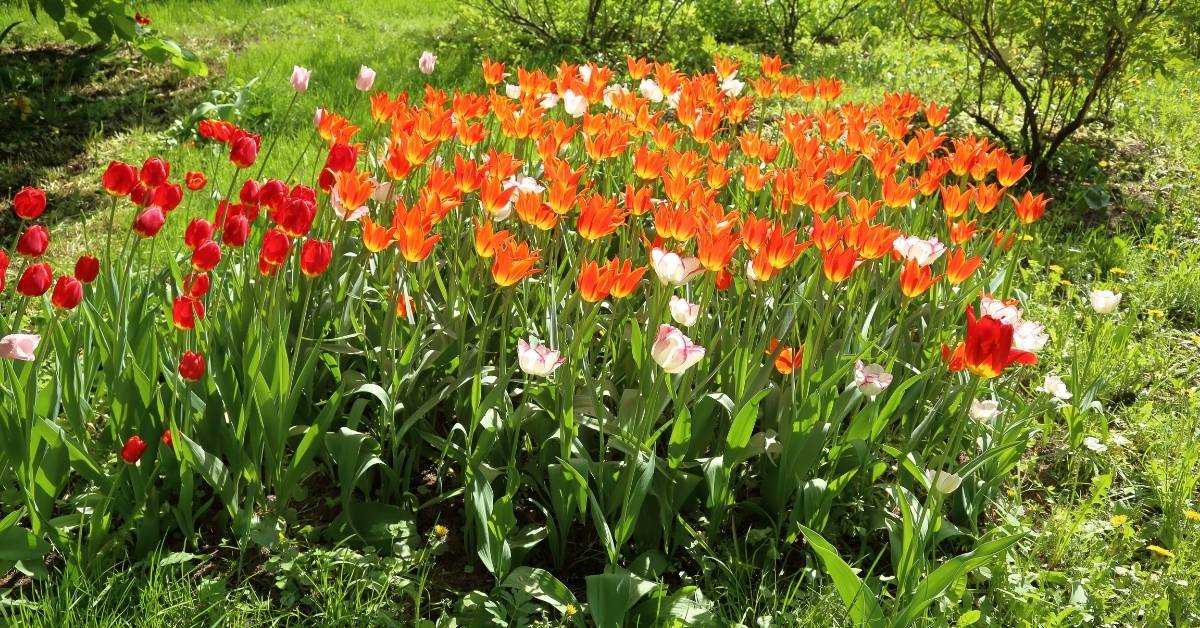
Containers: there are many advantages, little hassle
Another way to grow tulips outdoors is to plant them in baskets or containers in the fall. It is good because, after tulips bloom, containers with bulbs can be dug out of the soil and placed in some less prominent place for growing (in a greenhouse for tomatoes, if the summer is rainy, or in the shade under a canopy, if the weather is hot). To remove the bulbs, turn the container over, and there is no risk of accidentally injuring them.
Commercially available special baskets can be used as containers. But they are a little small and are more suitable for planting small-bulbous ones.
And for tulips, it is better to use plastic fruit crates. It is possible to plant bulbs in them less often and to bury them deeper. If the holes in the bottom or sides of the boxes are large, then the bottom can be lined with non-woven fabric or fine mesh.
Large plastic pots are also convenient (they usually sell plants, their bottom is in the form of a cross). But when they are buried, a high side should not be left. During a thaw during the day, meltwater accumulates there and freezes at night, which can cause young shoots to suffer.
You can also plant tulips on vegetable nets. To do this, spread the mesh in the hole, lay the bulbs on it, and cover it with soil. The following summer, when digging the bulbs for drying, they grope the edge with a shovel and smoothly pull on it. In the same grid, peeled bulbs are stored until autumn, in which they are treated with a fungicide. But for planting, you should make a new one.
